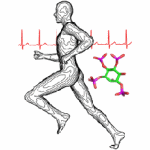Physiology
|
17 august 2011 12:35:00 |
| Monitoring the wild black bear`s reaction to human and environmental stressors (BMC Physiology) |
|
Tweet Background:
Bears are among the most physiologically remarkable mammals. They spend half their life in an active state and the other half in a state of dormancy without food or water, and without urinating, defecating, or physical activity, yet can rouse and defend themselves when disturbed. Although important data have been obtained in both captive and wild bears, long-term physiological monitoring of bears has not been possible until the recent advancement of implantable devices. Results: Insertable cardiac monitors that were developed for use in human heart patients (Reveal XT, Medtronic, Inc) were implanted in 15 hibernating bears. Data were recovered from 8, including 2 that were legally shot by hunters. Devices recorded low heart rates (pauses of over 14 seconds) and respiration rates (1.5 breaths/min) during hibernation, dramatic respiratory sinus arrhythmias in the fall and winter months, and elevated heart rates in summer (up to 214 beats/min (bpm)) and during interactions with hunters (exceeding 250 bpm). The devices documented the first and last day of denning, a period of quiescence in two parturient females after birthing, and extraordinary variation in the amount activity/day ranging from 0 (winter) to 1084 minutes (summer). Data showed a transition toward greater nocturnal activity in the fall, preceding hibernation. The data-loggers also provided evidence of the physiological and behavioral responses of bears to our den visits to retrieve the data. Conclusions: Annual variations in heart rate and activity have been documented for the first time in wild black bears. This technique has broad applications to wildlife management and physiological research, enabling the impact of environmental stressors from humans, changing seasons, climate change, social interactions and predation to be directly monitored over multiple years. |
| 138 viewsCategory: Physiology |
 Receptors and effects of gut hormones in three osteoblastic cell lines (BMC Physiology) Receptors and effects of gut hormones in three osteoblastic cell lines (BMC Physiology)Metabolomic phenotyping of a cloned pig model (BMC Physiology) 
|
| blog comments powered by Disqus |
MyJournals.org
The latest issues of all your favorite science journals on one page
The latest issues of all your favorite science journals on one page



